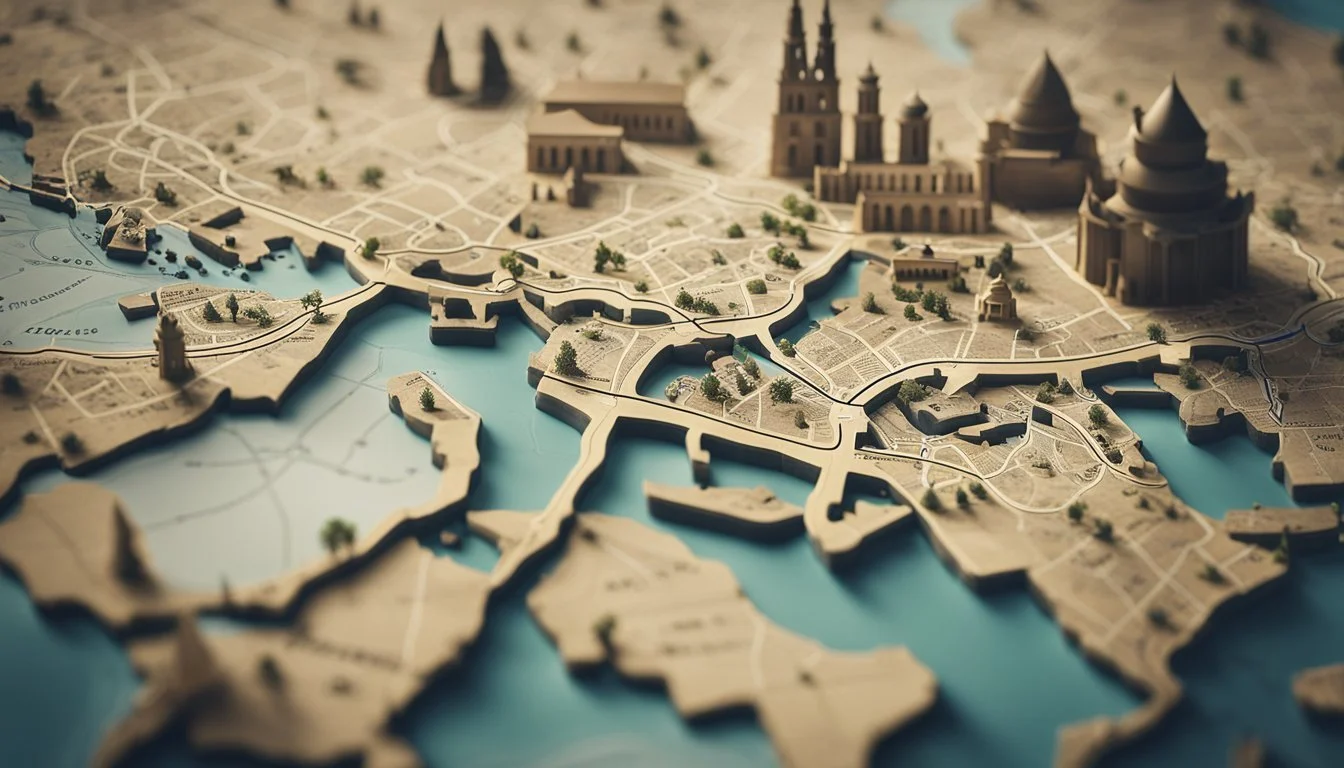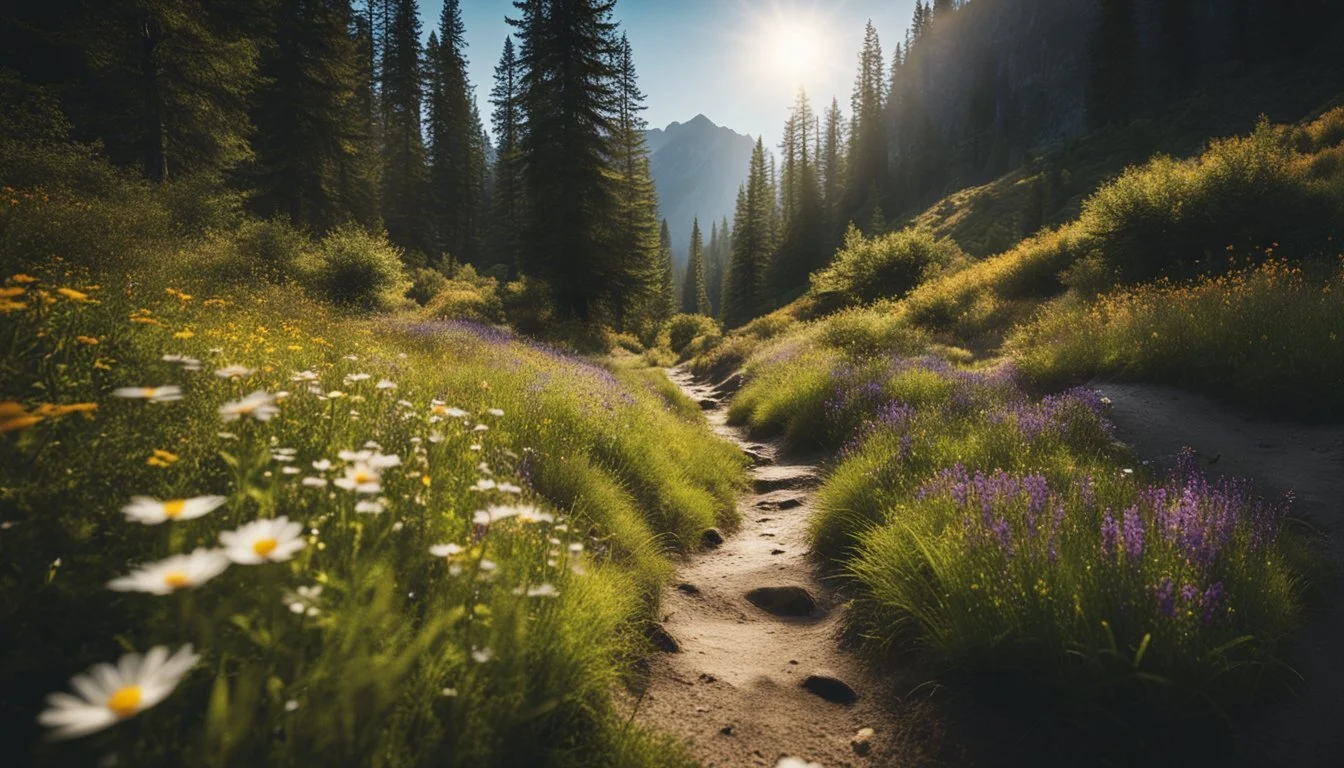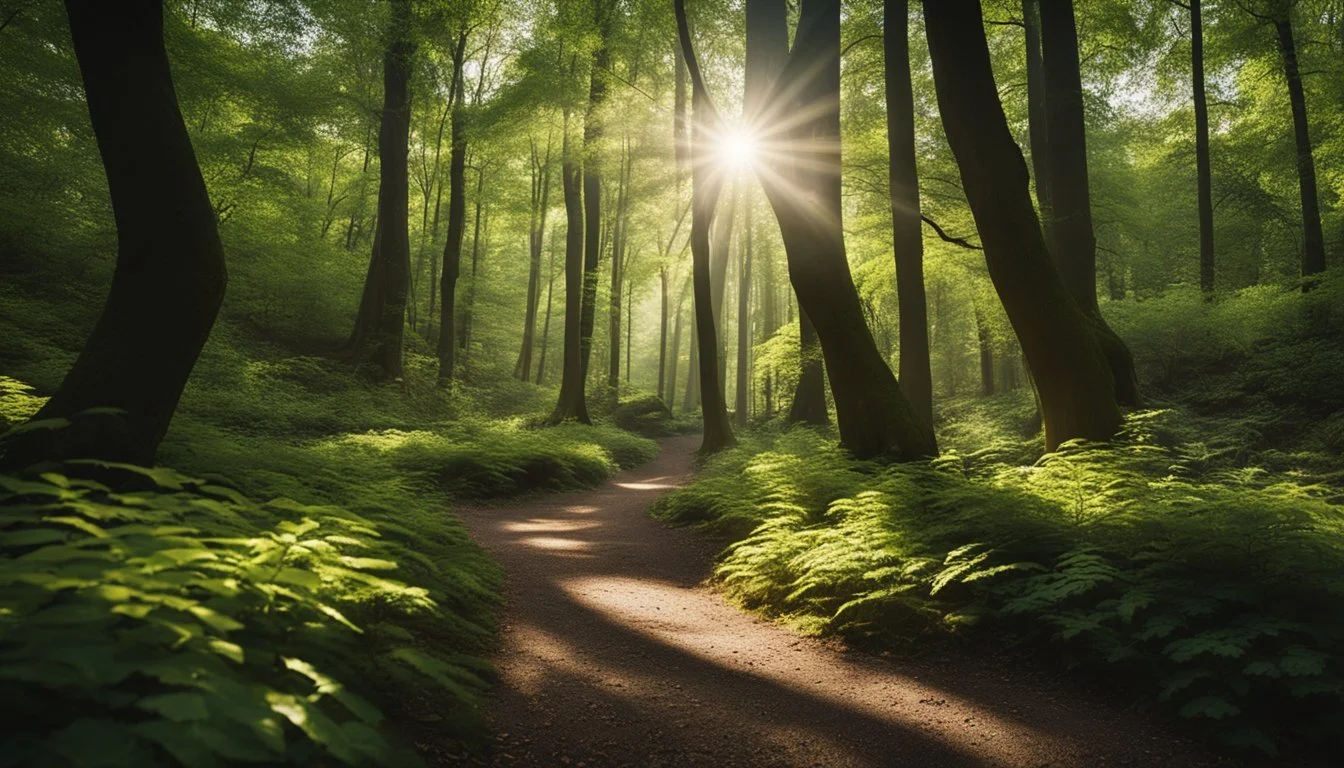6 Historical Journeys You Should Watch
Must-See Films and Documentaries
History is filled with captivating journeys that have left indelible marks on our world. From epic adventures across continents to pivotal events that shaped societies, each journey offers a unique glimpse into the past. For those eager to explore history from the comfort of their own homes, these six historical journeys provide a compelling window into significant moments and adventures of yesteryears.
Watching these historical journeys not only offers entertainment but also deepens our appreciation and understanding of the events and figures who have influenced our modern world. Whether it's uncovering the mysteries of ancient civilizations or retracing the steps of iconic explorers, these journeys are a fascinating way to immerse oneself in history.
1) "The Motorcycle Diaries" - Che Guevara (2004)
"The Motorcycle Diaries" chronicles the formative journey of a young Ernesto "Che" Guevara before he became a revolutionary icon.
At 23, Guevara set out with his friend Alberto Granado on a motorcycle adventure across South America. The journey reveals diverse landscapes and cultures, highlighting issues of poverty and social injustice.
The film captures Guevara's evolving perspective on life. Through his encounters with marginalized communities, he gains a deeper awareness of the economic disparities in the region.
The narrative is based on Guevara's own diary entries, offering an authentic glimpse into his thoughts and experiences. His reflections provide insight into the early influences that shaped his ideological beliefs.
"The Motorcycle Diaries" not only serves as a travelogue but also as a biography, blending historical context with personal growth. The film was directed by Walter Salles and stars Gael García Bernal as Che Guevara.
For more information on the film, visit its Wikipedia page.
2) "Into the Wild" - Christopher McCandless (2007)
"Into the Wild" tells the true story of Christopher McCandless, a young man who abandoned his conventional life for a journey into the Alaskan wilderness.
After graduating from college, McCandless donated his savings, ditched his possessions, and set out to explore the wild. His journey represents a quest for freedom and an unencumbered life.
Directed by Sean Penn and based on Jon Krakauer's book, the film stars Emile Hirsch as McCandless. The movie offers a cinematic depiction of his adventures, struggles, and ultimate fate in the remote landscapes of Alaska.
McCandless’s story explores themes of self-reliance, societal rejection, and introspection. It captures the spirit of adventure and the allure of the unknown, coupled with the profound risks these passions can entail.
McCandless's odyssey, though tragic, has inspired many to consider their own paths to self-discovery and fulfillment.
For more details on "Into the Wild," visit Wikipedia.
3) "Wild" - Cheryl Strayed (2014)
"Wild" is based on Cheryl Strayed's memoir that describes her transformative solo hike on the Pacific Crest Trail. After the devastating loss of her mother and the collapse of her marriage, Strayed decides to embark on this challenging 1,100-mile journey.
Strayed's trek becomes a path to self-discovery and healing. Alongside physical hardships like blistered feet and extreme weather, she confronts her inner struggles. Her journey is punctuated by moments of profound reflection and personal growth.
The film adaptation, starring Reese Witherspoon, captures the essence of Strayed’s story beautifully. Witherspoon’s portrayal brings to life the emotional depth of the memoir, showcasing the resilience and determination required to complete such an arduous trek.
"Wild" not only highlights the physical trials of long-distance hiking but also delves into the mental and emotional resilience needed to overcome personal demons. It is a powerful narrative of redemption and renewal, set against the stunning backdrop of the American wilderness.
For more information, check out "Wild" on IMDb (2014).
4) "A Walk in the Woods" - Bill Bryson (2015)
"A Walk in the Woods" recounts the trek of Bill Bryson, who decided to hike the 2,100-mile Appalachian Trail. The trail stretches from Georgia to Maine, and Bryson undertook this journey to reconnect with his native America after spending two decades in Britain.
The book combines Bryson’s humorous narrative with observations on the trail’s history and environment. He writes about the silent forests, sparkling lakes, and the wildlife he encounters, including an amusing incident with bears.
Bryson's wit and vivid descriptions make the arduous hike both entertaining and insightful. His companion, Stephen Katz, adds another layer of humor and camaraderie to the adventure.
The tale is not just about the physical journey but also reflects on personal and ecological themes. Bryson’s writing encourages readers to appreciate nature while also highlighting the challenges of hiking such a long trail.
For more information on "A Walk in the Woods," visit Wikipedia.
5) "Eat, Pray, Love" - Elizabeth Gilbert (2010)
"Eat, Pray, Love" is a film adaptation of Elizabeth Gilbert's best-selling memoir. This journey chronicles Gilbert's year-long trip around the world in search of self-discovery and spiritual fulfillment.
The story begins with Gilbert's decision to leave behind her comfortable life, including a marriage and a career. She travels to Italy, where she indulges in the pleasure of eating.
Next, Gilbert moves to an ashram in India, immersing herself in prayer and meditation to seek inner peace.
Her final destination is Bali, Indonesia, where she aims to balance enjoyment and spirituality. Here, she also explores a romantic relationship that contributes to her personal growth.
Each destination symbolizes a different aspect of self-improvement and offers viewers inspiration to seek their own paths of fulfillment.
For more information, visit Wikipedia.
6) "Tracks" - Robyn Davidson (2013)
Robyn Davidson's journey across the Australian desert is a tale of persistence and self-discovery. In 1977, Davidson set out to traverse 2,700 kilometers of unforgiving terrain with only her dog and four camels for company.
Her memoir, "Tracks," details her experiences, struggles, and the profound connection she developed with her animal companions.
Davidson embarked on her expedition from Alice Springs, a remote town in Central Australia. The journey required immense preparation and determination, as she faced scorching heat, potential dangers, and moments of isolation.
While her path was fraught with challenges, it ultimately became a powerful narrative of courage and resilience.
The story was adapted into a film in 2013, starring Mia Wasikowska as Robyn Davidson. The movie captures the essence of her solitary trek and the striking landscapes she traversed.
Davidson's adventure is not just a physical journey but a testament to human willpower and the quest for personal freedom.
For more information on the film, visit the IMDb page.
Exploring Authentic Historical Accuracy
When engaging with period dramas, the authenticity of historical accuracy can enhance the viewing experience. It is essential to scrutinize era-specific contexts and the cultural depictions portrayed on screen.
Understanding Era-Specific Contexts
A critical aspect of historical accuracy involves ensuring that the era-specific contexts are portrayed correctly. This entails meticulous attention to costumes, architecture, language, and social norms pertinent to the time period in question. For example, films set in the 18th century should accurately reflect the clothing styles and architectural designs unique to that era.
Authenticity in language and dialect is another key factor. Historical films must strive to incorporate language patterns and slang accurately, even if they occasionally modernize dialogues for contemporary audiences.
Researchers and production teams often consult historians and archival materials to avoid anachronisms. Set designs, as well as props, must be carefully chosen to align with the specific time period. This level of detail can significantly contribute to the believability and educational value of the film.
Analyzing Cultural Depictions
Historical films also play a crucial role in depicting cultural facets of the eras they represent. Social hierarchies, gender roles, and ethnic representation are all cultural elements that must be handled with care. Authentic representation can provide engaging insights into how different social groups interacted in the past.
Cultural accuracy involves assessing how well the film portrays the day-to-day lives and social norms of its characters. This includes showing how certain events or characters shaped societal changes. For instance, the depiction of Queen Anne's court in "The Favourite" captures the palace intrigue and political dynamics of the time.
While staying true to the cultural context, filmmakers often face the challenge of balancing historical fidelity with storytelling. The inclusion of historically accurate cultural elements can enrich narratives and help viewers gain a deeper appreciation of historical epochs.
Influence of Historical Events on Storytelling
Historical events often shape storytelling by providing rich contexts and authentic backdrops. They influence character development, plot progression, and thematic depth in narratives.
Impact of Major Conflicts
Major conflicts like wars and revolutions have a significant effect on storytelling. These events create dramatic tension and explore human resilience.
For instance, World War II has inspired countless stories that highlight bravery, loss, and triumph. Literature and film often depict the emotional and physical scars left on soldiers and civilians.
Revolutionary periods like the American and French Revolutions are also popular settings. Such stories focus on themes of freedom, justice, and societal change, and help readers understand the complex causes and effects of these events.
Evolution of Societal Norms
The evolution of societal norms over time is another key influence on storytelling. Changing beliefs about gender roles, race, and class provide fertile ground for narratives that explore these shifts.
Novels set during the industrial revolution often tackle issues of class disparity and labor rights. They depict the struggles of the working class against the backdrop of rapid technological changes.
Stories set in the 1960s civil rights movement highlight the fight for racial equality. They offer powerful insights into the courage and determination of those working to overthrow oppressive systems.
These narratives do more than entertain; they educate and inspire, reflecting the ongoing evolution of societal values.






